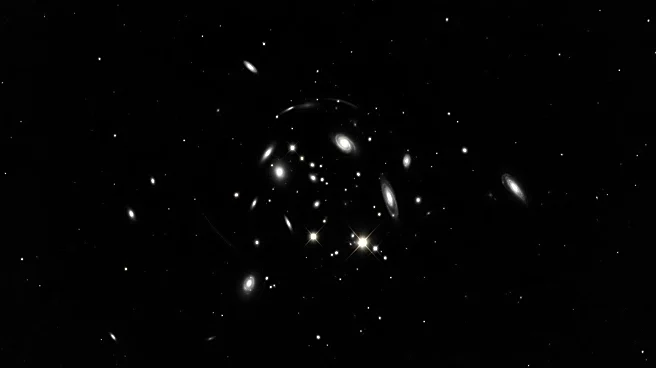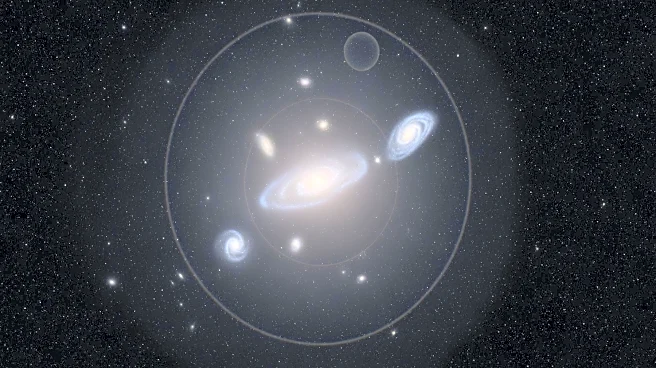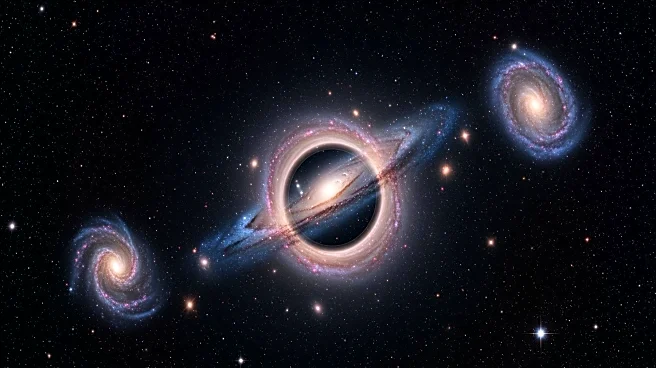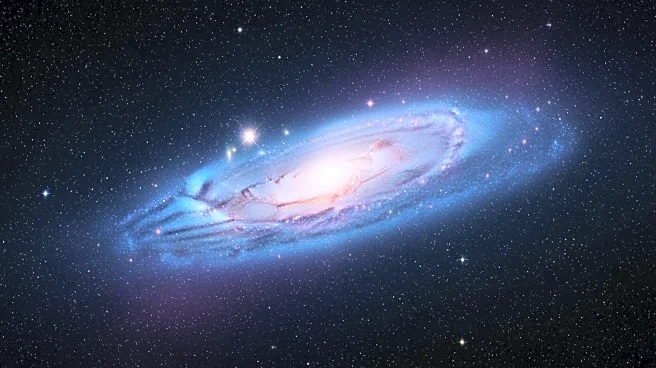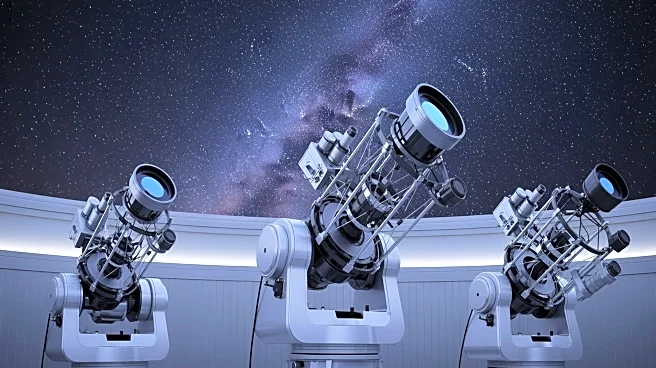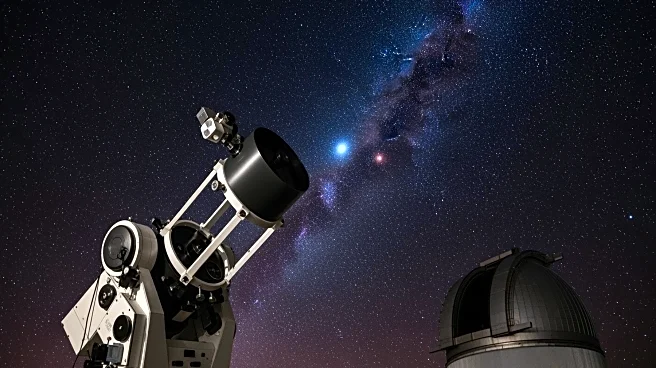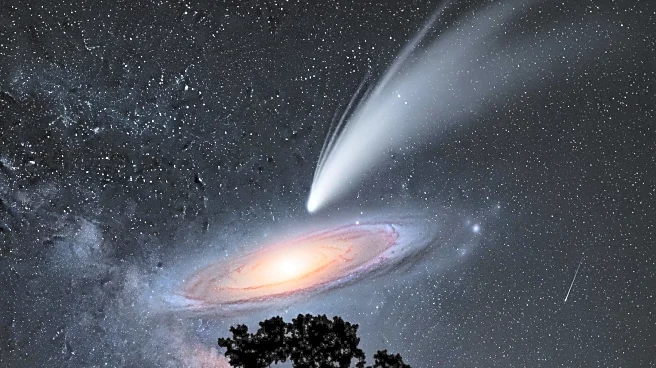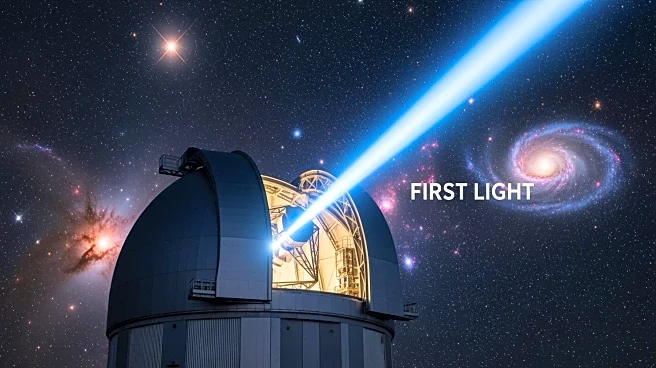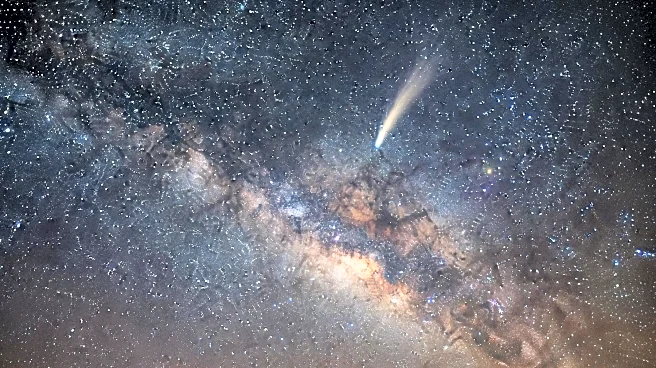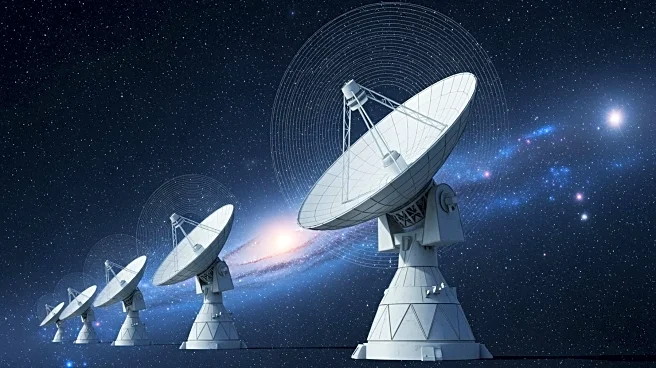What's Happening?
A study led by the Leibniz Institute for Astrophysics Potsdam (AIP) has provided new evidence supporting the existence of dark matter over modified gravity theories. Researchers analyzed stellar velocity
data from 12 faint dwarf galaxies, finding that their gravitational fields cannot be explained by visible matter alone. The study challenges the Modified Newtonian Dynamics (MOND) theory, which suggests gravity changes at low accelerations, eliminating the need for dark matter. Instead, the data aligns with models that propose these galaxies are surrounded by massive halos of dark matter.
Why It's Important?
This research reinforces the dark matter hypothesis, which posits that an invisible substance accounts for the gravitational effects observed in galaxies. The findings challenge MOND, a theory that has been a significant alternative to dark matter for decades. By demonstrating that dwarf galaxies do not conform to MOND predictions, the study narrows the scope for alternative explanations and strengthens the case for dark matter as a fundamental component of the universe. This has implications for our understanding of galaxy formation and the overall structure of the cosmos.
What's Next?
Future observations of even fainter and more distant galaxies will be crucial in further testing the dark matter hypothesis. As technology advances, researchers will continue to refine their models and gather more precise data. These efforts aim to uncover the true nature of dark matter and its role in the universe. The study's findings will likely influence ongoing debates in astrophysics and guide future research directions.
